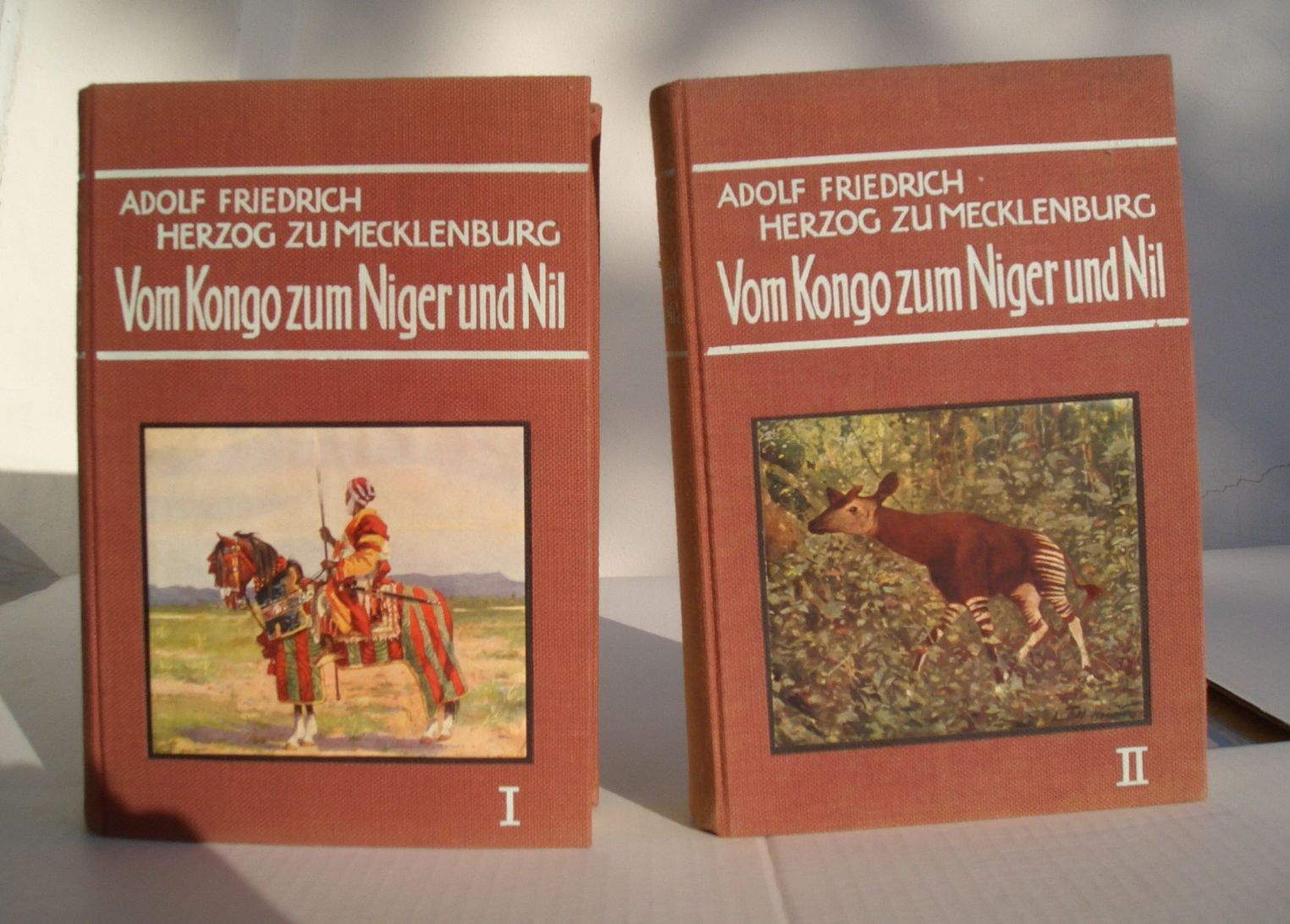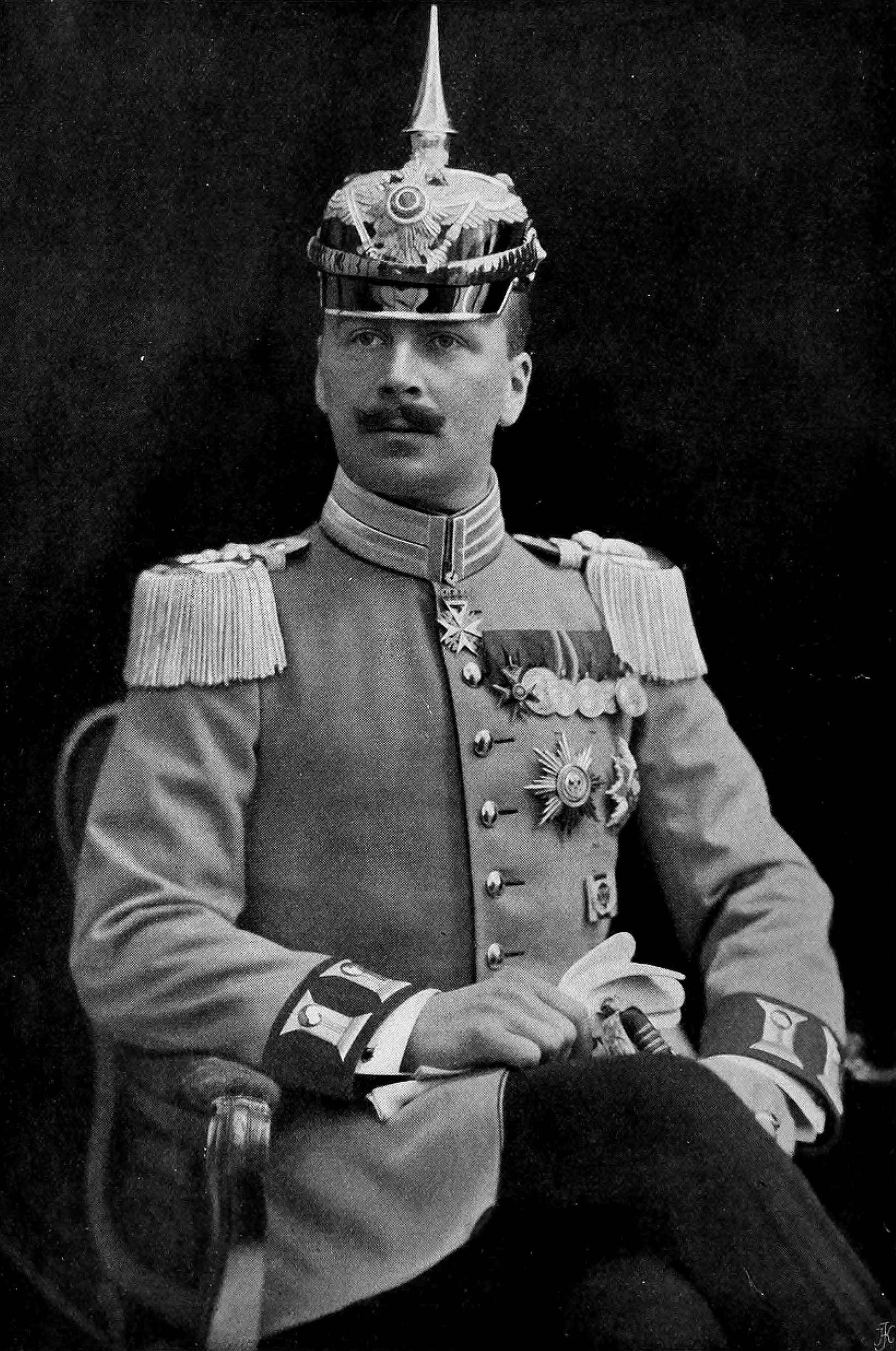1. Early Life and Background
Adolf Friedrich was born in Schwerin, then part of the Grand Duchy of Mecklenburg-Schwerin in the German Empire, on October 10, 1873. He was the third child of Frederick Francis II, Grand Duke of Mecklenburg-Schwerin, from his third marriage, and his mother was Princess Marie of Schwarzburg-Rudolstadt. He was the seventh son of his father. His younger brother was Prince Hendrik of the Netherlands, who became the prince consort to Queen Wilhelmina of the Netherlands.
2. Major Activities
Adolf Friedrich's career was marked by significant activities across scientific exploration, colonial administration, and sports leadership, each contributing to his complex historical profile.
2.1. African Expeditions and Colonial Administration
From 1907 to 1908, Adolf Friedrich led a scientific research expedition through the Central African Graben, successfully traversing the African continent from east to west. For his contributions to geography, he was awarded the Eduard Vogel Medal by the Association of Geography of Leipzig in 1908. Insect specimens collected during these expeditions and his subsequent residence in Togo are now housed at the Museum für Naturkunde in Berlin and the Senckenberg Natural History Museum in Frankfurt am Main.
Between 1910 and 1911, he embarked on another major expedition, exploring the region around Lake Chad and the northern river systems of the Congo Basin extending to the Nile in present-day Sudan. Adolf Friedrich and his accompanying team surveyed previously little-known primary forest areas along the tributaries of the Congo River and the basin of Lake Chad. Some detachments of his expedition advanced as far as the Bahr el Ghazal River near the upper Nile, while others ventured into southern Cameroon and the islands of the Gulf of Guinea. His detailed two-volume work based on these expeditions, Vom Kongo zum Niger und NilFrom the Congo to the Niger and the NileGerman, is still highly regarded for its comprehensive descriptions and imagery.

From June 19, 1912, to August 31, 1914, Adolf Friedrich served as the last governor of Togoland, a German colony in West Africa. His tenure as governor was part of Germany's broader colonial project, which involved the assertion of European control over African territories, often through the exploitation of resources and the subjugation of indigenous populations. This role places him within the complex and often controversial history of German colonialism. Due to his prior connection to the territory, he was invited to the official celebration of Togo's independence in 1960. After World War I, he continued his involvement in colonial affairs as the vice-president of the privately chartered German Colonial Society for Southwest Africa, an organization that promoted German colonial interests, while his half-brother, Duke John Albert of Mecklenburg, served as its president from 1895 to 1920.
2.2. Involvement in the United Baltic Duchy
During the tumultuous period at the end of World War I, Adolf Friedrich was considered for a monarchical role in a proposed German-backed state. After Soviet Russia formally renounced its authority over its former imperial Baltic provinces to Germany under the Treaty of Brest-Litovsk, a temporary regency council (RegentschaftsratRegency CouncilGerman) for all the Baltic provinces was established on November 5, 1918, led by Baron Adolf Pilar von Pilchau. This council proposed the creation of the United Baltic Duchy, a confederation of seven cantons: Kurland (Courland), Riga, Lettgallen (Latgale), Südlivland (Vidzeme), Nordlivland (South Estonia), Ösel (Saaremaa), and Estland (North Estonia). The proposed capital of this new state, which was intended to cover the territories of medieval Livonian Confederation (corresponding to modern-day Estonia and Latvia), was Riga.
Adolf Friedrich was selected as the prospective head of this planned puppet state, which would have significantly expanded German influence in the region. However, he never assumed office. The appointed regency council, comprising four Baltic Germans, three Estonians, and three Latvians, operated only until November 28, 1918. The United Baltic Duchy never gained international recognition outside of Germany and ultimately dissolved with Germany's defeat in World War I.
2.3. Sports Administration
Adolf Friedrich made significant contributions to the world of sports administration. He served as a member of the International Olympic Committee (IOC) from 1926 to 1956, a tenure spanning three decades that saw major developments in the Olympic movement. He also held leadership positions in German Olympic organizations. From 1948 to 1949, he served as the president of the German Olympic Committee (Deutscher Olympischer AusschussGerman Olympic CommitteeGerman, DOA), and subsequently, from 1949 to 1951, he was the first president of the National Olympic Committee of West Germany (Nationales Olympisches Komitee für DeutschlandNational Olympic Committee for GermanyGerman, NOK).
3. Writings
Adolf Friedrich published several significant works detailing his expeditions and scientific findings. His most notable publications include:
- Ins innerste AfrikaInto the Heart of AfricaGerman. Leipzig, 1909. This work was translated into English as In the Heart of Africa (London: Cassell, 1910).
- Vom Kongo zum Niger und NilFrom the Congo to the Niger and the NileGerman. Leipzig: F.A. Brockhaus, 1912. This two-volume work, based on his 1910-1911 expeditions, was translated into English as From the Congo to the Niger and the Nile: An Account of the German Central African Expedition of 1910-1911 (London: Duckworth, 1913). It is highly regarded for its detailed descriptions and accompanying images.
- Wissenschaftliche Ergebnisse der Deutschen Zentral-Afrika-Expedition unter Führung Adolf Friedrichs, Herzog zu MecklenburgScientific Results of the German Central Africa Expedition led by Adolf Friedrich, Duke of MecklenburgGerman. Leipzig, 1922. This multi-volume scientific series presented the detailed findings from his expeditions.
4. Personal Life and Death
Adolf Friedrich was married twice. His first marriage was to Princess Viktoria Feodora of Reuss-Schleiz (1889-1918) in Gera on April 24, 1917. She was the daughter of Heinrich XXVII, Prince Reuss Younger Line and Princess Elise of Hohenlohe-Langenburg. Tragically, Princess Viktoria Feodora died on December 18, 1918, just one day after giving birth to their only daughter, Duchess Woizlawa Feodora of Mecklenburg. Woizlawa Feodora (1918-2019) later married Prince Heinrich I Reuss of Köstritz in 1939.
On October 15, 1924, Adolf Friedrich married for a second time to Princess Elisabeth of Stolberg-Rossla (1885-1969), who was the widow of his half-brother, Duke John Albert. They were among the guests at the 1937 wedding of Juliana of the Netherlands and Prince Bernhard of Lippe-Biesterfeld.
Adolf Friedrich died on August 5, 1969, in Eutin, West Germany, at the age of 95. His second wife, Princess Elisabeth, survived him by only a few weeks. They were both buried in the Ratzeburg Cathedral.
5. Legacy
Adolf Friedrich's legacy is multifaceted, encompassing his contributions to scientific exploration and sports, alongside his involvement in the colonial politics of the German Empire. His extensive expeditions yielded significant scientific collections, and he is commemorated in the scientific names of several species, including a genus of lizards, Adolfus, a species of chameleon, Kinyongia adolfifriderici, the cichlid Haplochromis adolphifrederici, and the large tree species Aningeria adolfi-friederici.
His role as a colonial governor and a proponent of German colonial expansion, even in its waning years, is viewed through a critical lens in contemporary historical assessment, acknowledging the detrimental impacts of colonialism on the self-determination and human rights of colonized peoples. Nevertheless, his long and dedicated service to the International Olympic Committee and his leadership in German Olympic organizations mark him as an important figure in the development of international sports. His published works remain valuable historical and geographical accounts of the African regions he explored.
